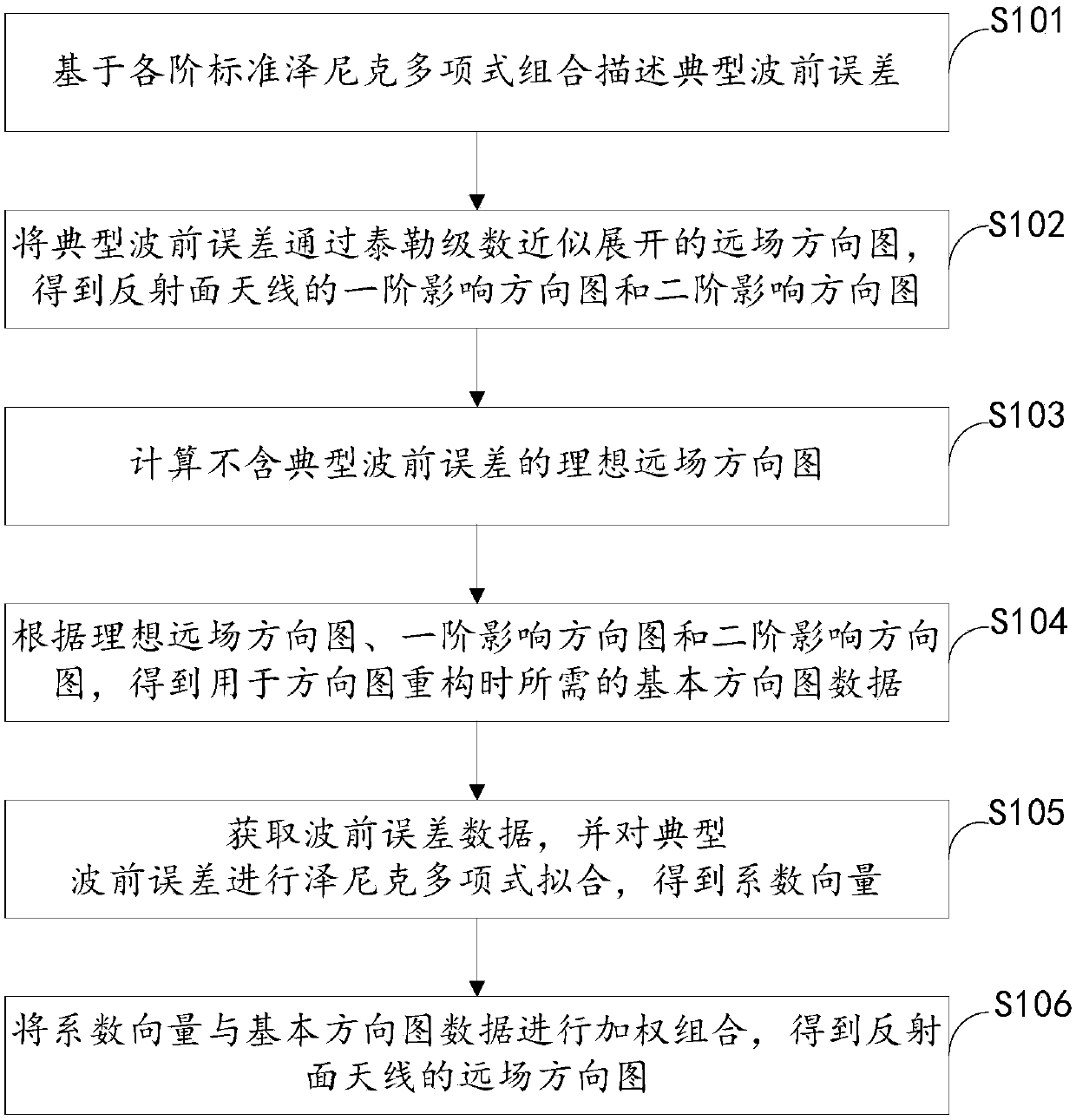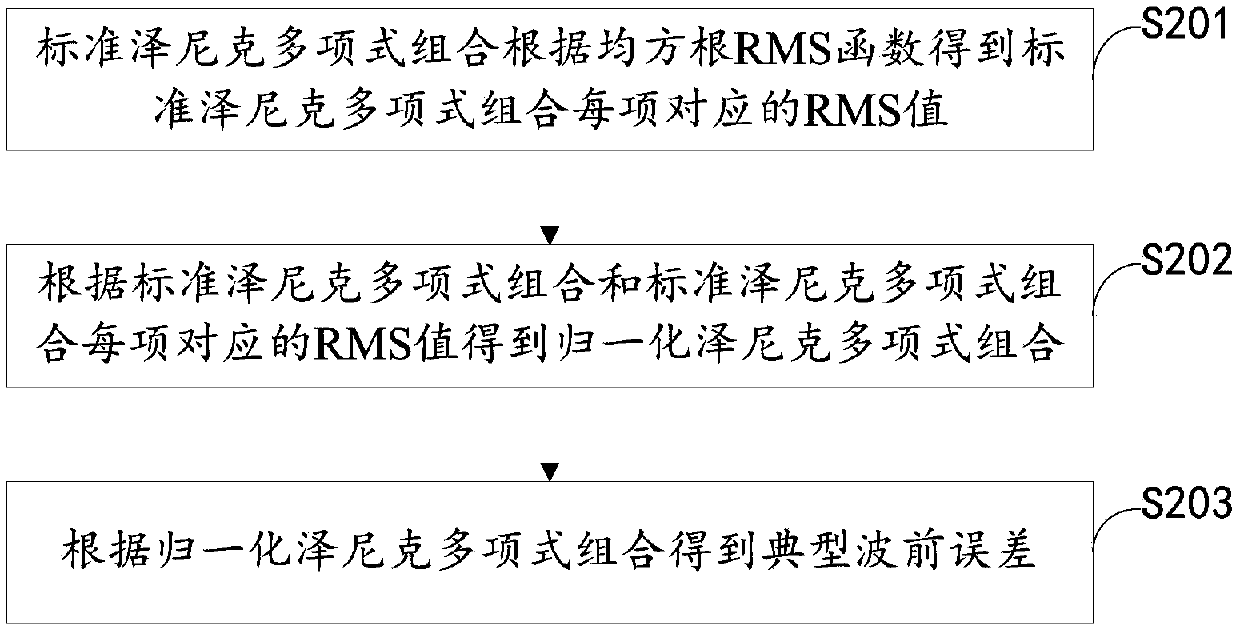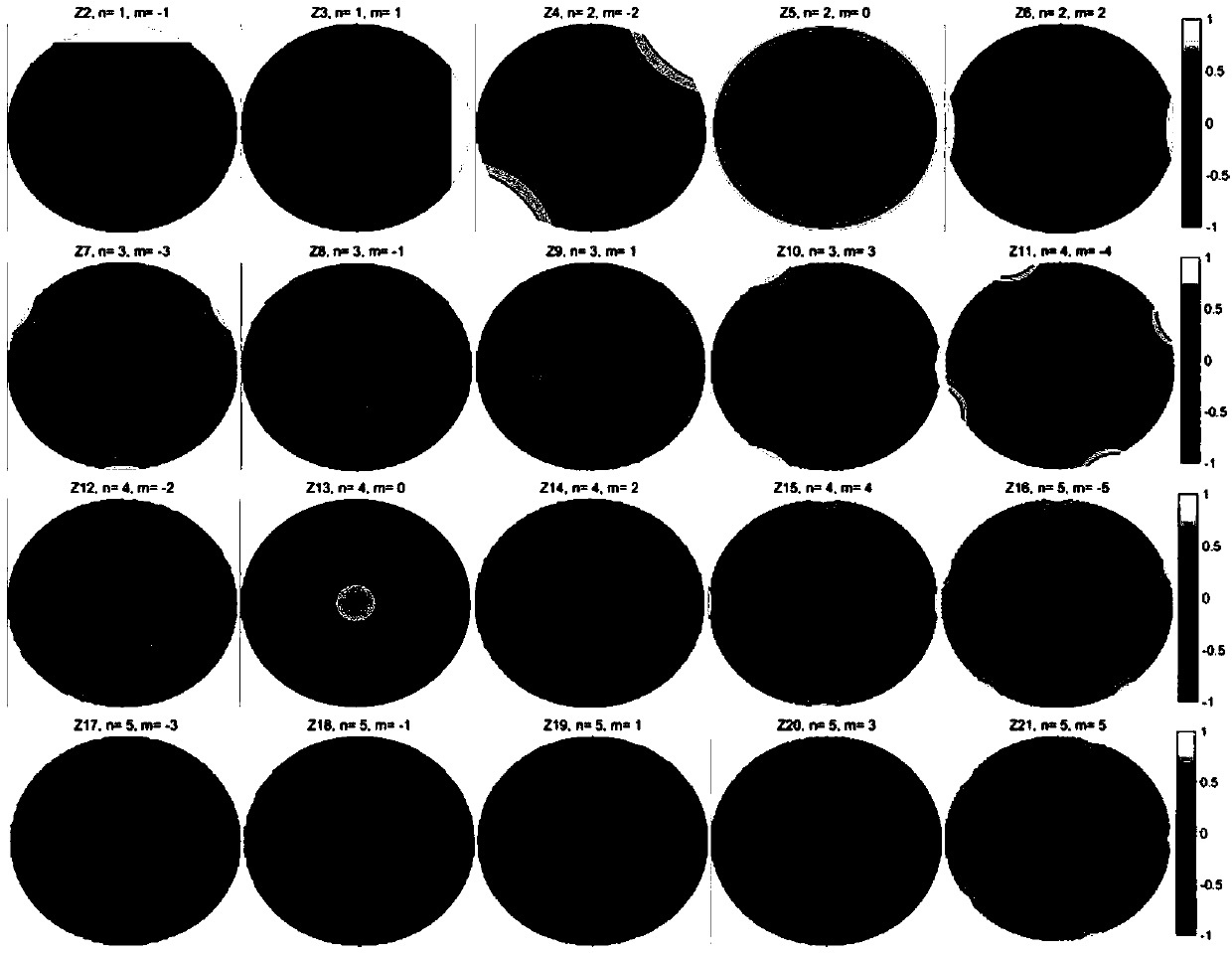Reconstructing method and system of reflector antenna far-field pattern
A technology for reconstructing systems and directional diagrams, applied to antenna radiation diagrams, complex mathematical operations, etc., can solve problems such as long calculation time, short calculation time, and consumption of several or even dozens of hours
- Summary
- Abstract
- Description
- Claims
- Application Information
AI Technical Summary
Problems solved by technology
Method used
Image
Examples
Embodiment 1
[0076] figure 1 It is a flow chart of the method for reconstructing the far-field pattern of the reflector antenna provided by Embodiment 1 of the present invention.
[0077] refer to figure 1 , the method includes the following steps:
[0078] Step S101, describing typical wavefront errors based on combinations of standard Zernike polynomials of each order;
[0079] Specifically, for a parabolic antenna, its aperture surface is generally a circular surface, and the wavefront error of the aperture surface can be described by using Zernike circular polynomials. Zernike polynomials are a series of polynomials composed of trigonometric functions and radial functions. The polynomials are orthogonal in the circular domain, so the wavefront error of any shape can be represented by the linear combination of the terms. In addition, the wavefront error described by the Zernike polynomial can correspond to the traditional optical system aberration, which is widely used in astronomica...
Embodiment 2
[0218] Such as Figure 8 As shown, the typical wavefront error is described based on the combination of standard Zernike polynomials of each order, and the first-order integral of the error pattern approximation and the first-order integral of the error pattern approximation are obtained according to the typical wavefront error, and then the approximate data of the first-order error pattern are obtained Approximate data with the first-order error pattern, that is, the first-order influence pattern and the second-order influence pattern of the reflector antenna in Embodiment 1; according to the geometric parameters and the geometrical optics radiation integral of the reflector antenna, the calculated The ideal far-field pattern data of the previous error; the ideal far-field pattern data, the approximate data of the first-order error pattern and the approximate data of the first-order error pattern constitute the basic pattern data; obtain the wavefront error data, and analyze t...
Embodiment 3
[0220] Figure 9 A schematic diagram of a system for reconstructing the far-field pattern of the reflector antenna provided in Embodiment 3 of the present invention.
[0221] refer to Figure 9 , the system consists of:
[0222] The description unit 10 is used to describe typical wavefront errors by combinations of standard Zernike polynomials of various orders;
[0223] The first acquisition unit 20 is used to obtain the first-order influence pattern and the second-order influence pattern of the reflector antenna by approximating the far-field pattern developed by the typical wavefront error through the Taylor series;
[0224] A calculation unit 30, configured to calculate an ideal far-field pattern without typical wavefront errors;
[0225] The second acquisition unit 40 is configured to obtain the basic pattern data required for pattern reconstruction according to the ideal far-field pattern, the first-order influence pattern and the second-order influence pattern;
[0...
PUM
 Login to View More
Login to View More Abstract
Description
Claims
Application Information
 Login to View More
Login to View More - R&D
- Intellectual Property
- Life Sciences
- Materials
- Tech Scout
- Unparalleled Data Quality
- Higher Quality Content
- 60% Fewer Hallucinations
Browse by: Latest US Patents, China's latest patents, Technical Efficacy Thesaurus, Application Domain, Technology Topic, Popular Technical Reports.
© 2025 PatSnap. All rights reserved.Legal|Privacy policy|Modern Slavery Act Transparency Statement|Sitemap|About US| Contact US: help@patsnap.com



